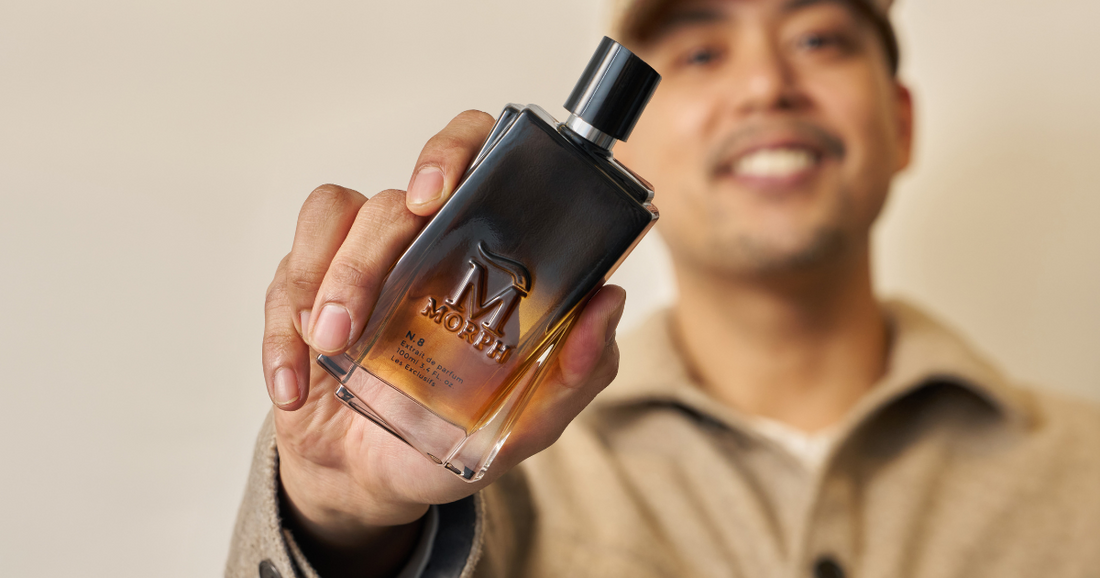
What’s the Difference Between Men’s and Women’s Fragrances?
For years, the fragrance industry has drawn clear lines between men’s and women’s scents. These distinctions are rooted in tradition, marketing, and cultural expectations. But what really sets them apart?
Fragrance Composition & Notes
The core difference comes down to scent profiles. Traditionally, men’s fragrances lean into deep, rich notes, while women’s fragrances highlight lighter, sweeter aromas.
- Men’s fragrances often feature woody, spicy, musky, and earthy notes. Think of the warmth of sandalwood, the depth of leather, or the crispness of vetiver. Many men’s colognes also include aquatic elements, like the salty breeze of the ocean.
- Women’s fragrances tend to be floral, fruity, sweet, and powdery. Imagine the delicate scent of jasmine, the brightness of citrus, or the indulgence of vanilla. Gourmand notes (like caramel, honey, and chocolate) are also common in women’s perfumes.
- Where they overlap: Fresh and citrus notes blur the lines. Bright bergamot, zesty lemon, and crisp green elements work well in both men’s and women’s scents. These shared ingredients are why many modern fragrances feel less gender-specific.
Concentration and Strength
Beyond scent, the structure of men’s and women’s fragrances differs, too.
- Men’s colognes often have stronger base notes. This means they dry down to rich, long-lasting accords like woods, musk, or amber. These deeper notes create a bold, lingering presence.
- Women’s perfumes can be more complex in their evolution. Many start with vibrant top notes (like citrus or fruit), bloom into floral hearts, and settle into soft, powdery or sweet bases.
- Longevity and projection vary. Because men’s scents rely on deeper, heavier ingredients, they often last longer and project farther. Women’s perfumes, especially floral or fresh ones, may feel lighter on the skin and wear closer over time.
While these distinctions still shape fragrance design, the rise of unisex scents is shifting the conversation. More and more, it’s about personal preference – not labels.
The Rise of Unisex and Gender-Neutral Fragrances
More luxury and niche brands are embracing gender-neutral scents, redefining how we experience fragrance. Instead of following the traditional blueprint of deep, woody colognes for men and sweet, floral perfumes for women, unisex fragrances blend both worlds or create something entirely new.
As more fragrance houses move away from traditional classifications, scent becomes an even more personal form of self-expression.
How to Choose a Fragrance Based on Preference, Not Gender
The key is finding what resonates with you rather than relying on traditional categories.
- Smell and test fragrances without preconceived biases. Don’t limit yourself to one section of the store – explore both sides. What smells “masculine” or “feminine” is often a matter of conditioning, not fact.
- Consider how a fragrance interacts with your skin. Everyone’s body chemistry is unique. The same scent can smell vastly different on two people. Instead of focusing on labels, test how a fragrance develops over time on your skin.
- Think about what scents you naturally enjoy. Do you love warm, cozy scents? Look for notes like vanilla, sandalwood, or amber. Prefer something fresh and airy? Citrus, green tea, or marine notes might be your match.
At the end of the day, fragrance is about self-expression. If you’re drawn to a fragrance, wear it.
Questions About Men’s vs. Women’s Fragrances
Can a woman wear men’s cologne?
Absolutely! Many women love the richness typically found in men’s colognes. In fact, deeper notes can feel just as sophisticated and alluring on women as they do on men. Some women even prefer men’s colognes for their depth and longevity.
Is men’s cologne stronger than women’s perfume?
Often, yes – but not always. Men’s fragrances tend to have stronger base notes, making them feel more intense and long-lasting.
However, strength also depends on the concentration of the fragrance. An eau de parfum (EDP) will typically last longer than an eau de toilette (EDT), regardless of whether it’s labeled for men or women.
How do I know if a perfume is unisex?
Unisex fragrances are designed without strong leanings toward traditional masculine or feminine notes.
If a fragrance blends citrus, woods, musks, or green notes without being overly floral or deeply smoky, it’s likely unisex.
What’s the most attractive fragrance for men and women?
Scent preferences are subjective, but fresh and warm fragrances tend to be universally appealing.
Clean citrus, light woods, and subtle spices are often well-received for men. For women, soft florals, vanilla, and musky ambers tend to draw compliments.
However, the most attractive fragrance is the one that makes you feel confident – because confidence is always captivating.
Scent Is Personal – Choose What Speaks to You
More than ever, fragrance is about self-expression. Whether you’re drawn to a bold, smoky oud, a delicate floral, or a crisp citrus blend, the best scent is the one that resonates with you.


